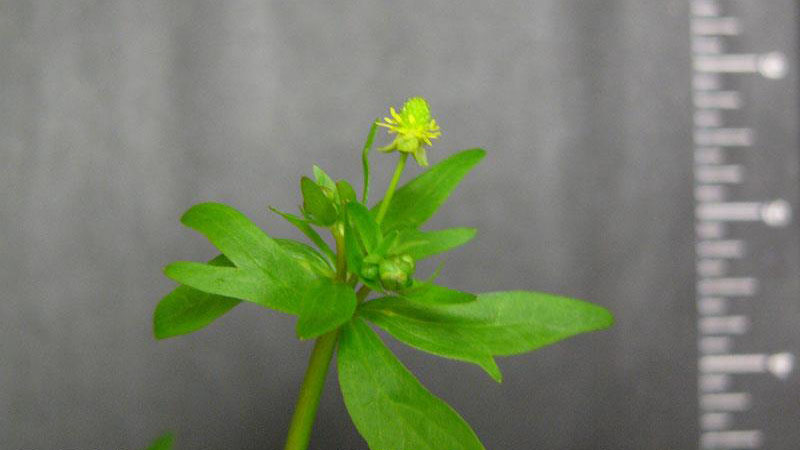Smallflower Buttercup
en Español / em Português
El inglés es el idioma de control de esta página. En la medida en que haya algún conflicto entre la traducción al inglés y la traducción, el inglés prevalece.
Al hacer clic en el enlace de traducción se activa un servicio de traducción gratuito para convertir la página al español. Al igual que con cualquier traducción por Internet, la conversión no es sensible al contexto y puede que no traduzca el texto en su significado original. NC State Extension no garantiza la exactitud del texto traducido. Por favor, tenga en cuenta que algunas aplicaciones y/o servicios pueden no funcionar como se espera cuando se traducen.
Português
Inglês é o idioma de controle desta página. Na medida que haja algum conflito entre o texto original em Inglês e a tradução, o Inglês prevalece.
Ao clicar no link de tradução, um serviço gratuito de tradução será ativado para converter a página para o Português. Como em qualquer tradução pela internet, a conversão não é sensivel ao contexto e pode não ocorrer a tradução para o significado orginal. O serviço de Extensão da Carolina do Norte (NC State Extension) não garante a exatidão do texto traduzido. Por favor, observe que algumas funções ou serviços podem não funcionar como esperado após a tradução.
English
English is the controlling language of this page. To the extent there is any conflict between the English text and the translation, English controls.
Clicking on the translation link activates a free translation service to convert the page to Spanish. As with any Internet translation, the conversion is not context-sensitive and may not translate the text to its original meaning. NC State Extension does not guarantee the accuracy of the translated text. Please note that some applications and/or services may not function as expected when translated.
Collapse ▲Description
Smallflower buttercup (Ranunculus abortivus) may resemble a wild violet in its early growth, but later in the life cycle it produces upright stems that are slender and branch from the base of the plant. Lower leaves are dark green and rounded, while upper leaves are a brighter green and elongate with occasional lobes. Flowers, which appear from April to August, are tiny and yellow with five petals. The plant can grow to heights of 6 - 24 inches. Smallflower buttercup reproduces by seed. This weed grows in both dry and moist environments and is commonly found in fields, waste areas, and wooded habitats. It can be distinguished from hairy buttercup by the lack of hairs on its leaves. In addition, hairy and bulbous buttercup have lobed leaves, whereas most of the lower leaves of smallflower buttercup are unlobed.
Cultural Control
Perennial broadleaf turf weeds are capable of living more than two years. They thrive in weak, thin turf; golf fairways and roughs; home lawns; playfields; and industrial grounds. Proper turf maintenance is the key to control of this weed. First, select adapted turfgrass cultivars for your area and then properly fertilize, mow, and water to encourage dense growth.
Species Data
- GROWTH SEASON / LIFE CYCLE
- winter annual or biennial or perennial weed
- GROWTH HABIT
- upright
Figure 1
- upright
- LEAFLET NUMBER
- one
- LEAF MARGIN
- most of the lower leaves exhibit crinkled leaf margins, while upper leaves tend to have smooth margins
Figure 2
- most of the lower leaves exhibit crinkled leaf margins, while upper leaves tend to have smooth margins
- LEAF HAIRS
- most of the lower leaves are heart-shaped and unlobed, whereas the upper leaves tend to be elongated and occasionally lobed
- LEAF VENATION
- pinnate
- LEAF ARRANGEMENT
- ROOT TYPE
- fibrous
- FLOWER COLOR
- yellow
Figure 6
- yellow







